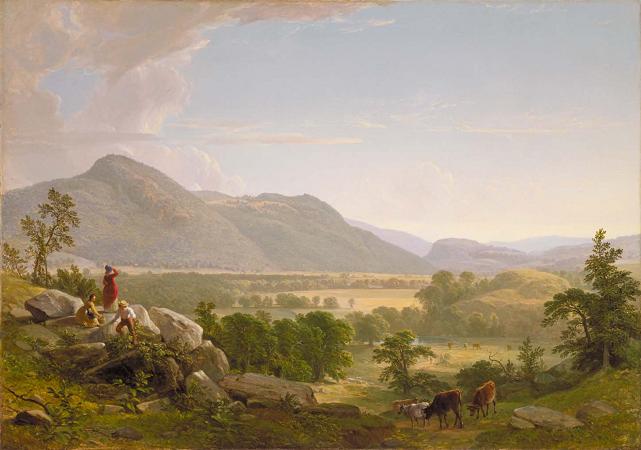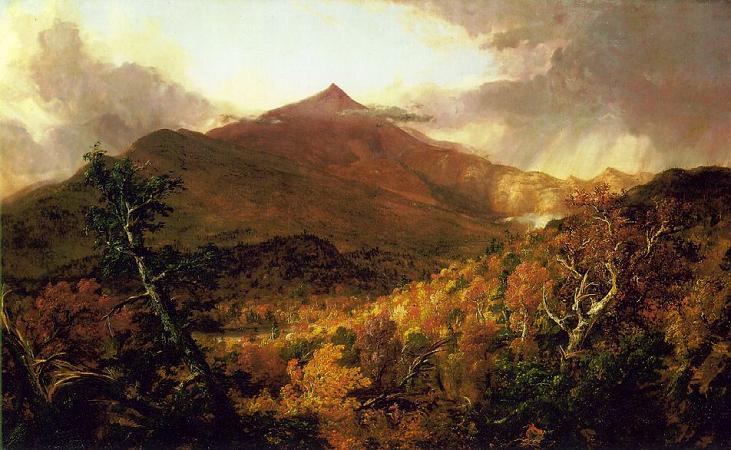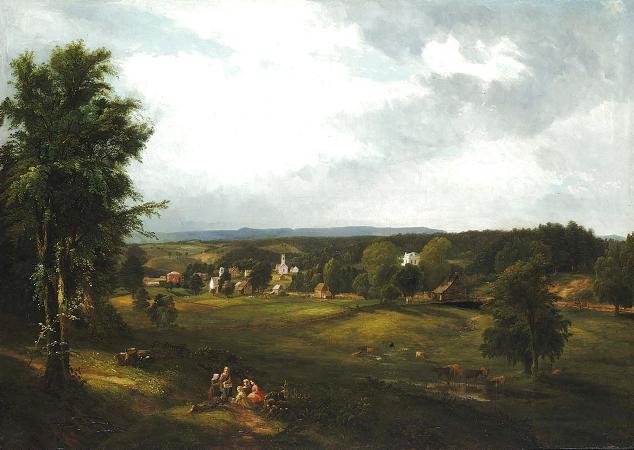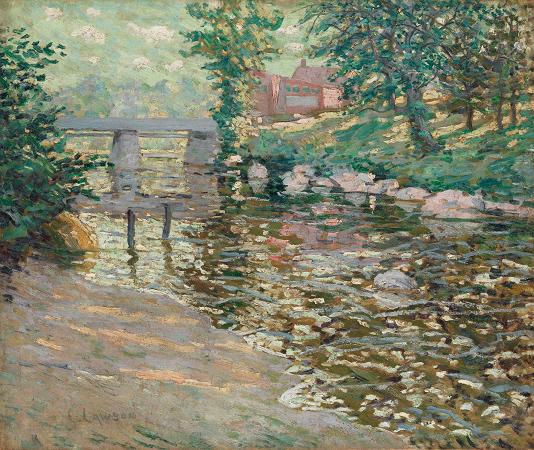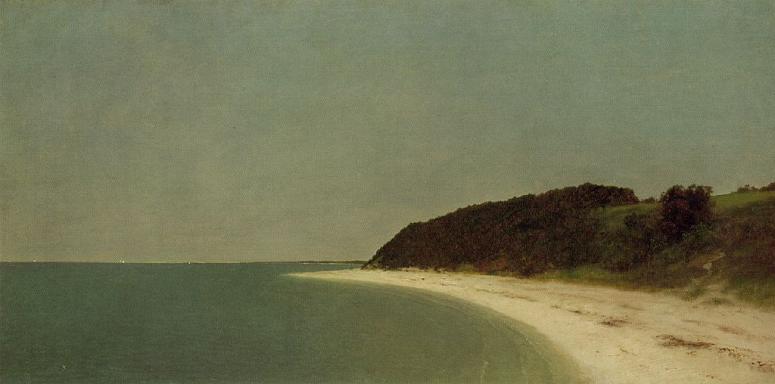New York State. New York is a state in the Northeastern region of the United States. It has been widely represented in art, from its rural landscapes to its urban environments. The Hudson River School, with artists like Thomas Cole, Frederic Edwin Church, and Asher B. Durand, captured the state's majestic natural beauty, particularly its rivers, mountains, and forests, influencing American landscape painting in the 19th century. In the 20th century, artists like Georgia O'Keeffe and Milton Avery explored both the serene upstate landscapes and urban scenes. New York's role as a cultural hub also inspired modern artists, such as the Ashcan School’s depiction of urban life and the Abstract Expressionists like Jackson Pollock, who worked in Long Island. The state’s diverse environments, from the Adirondacks to the Catskills, and its industrial and urban centers, have continued to be subjects in art, representing both the natural grandeur and the complexities of its cities. A Mid-Atlantic state, New York borders New England, and has an international border with Canada. With almost 19.6 million residents, it is the fourth-most populous state in the United States and seventh-most densely populated as of 2023. New York is the 27th-largest U.S. state by area, with a total area of 54,556 square miles. New York has a varied geography. The southeastern part of the state, known as Downstate, encompasses New York City, the most populous city in the United States, Long Island, the most populous island in the United States, and the lower Hudson Valley. These areas are the center of the New York metropolitan area, a sprawling urban landmass, and account for approximately two-thirds of the state's population. The much larger Upstate area spreads from the Great Lakes to Lake Champlain, while its Southern Tier region extends to the border of Pennsylvania. Upstate includes the Adirondack Mountains and the Catskill Mountains. The east-west Mohawk River Valley bisects the more mountainous regions, and flows into the north-south Hudson River valley near the state capital of Albany. Western New York, home to the cities of Buffalo and Rochester, is part of the Great Lakes region and borders Lake Ontario and Lake Erie. Central New York is anchored by the city of Syracuse; between the central and western parts of the state, New York is dominated by the Finger Lakes, a popular tourist destination. New York was one of the original Thirteen Colonies that went on to form the United States. The area of present-day New York had been inhabited by tribes of the Algonquians and the Iroquois Confederacy Native Americans for several thousand years by the time the earliest Europeans arrived. Stemming from Henry Hudson's expedition in 1609, the Dutch established the multiethnic colony of New Netherland in 1621, which included the settlements of Fort Orange, Wiltwijck, and New Amsterdam.
more...

